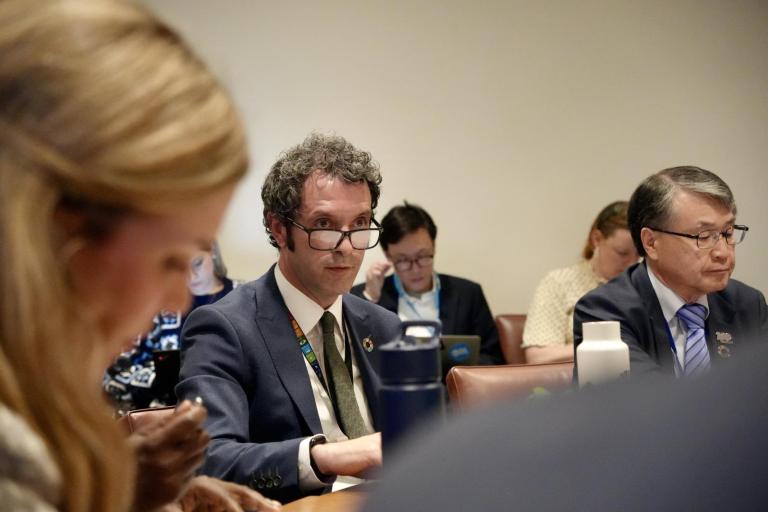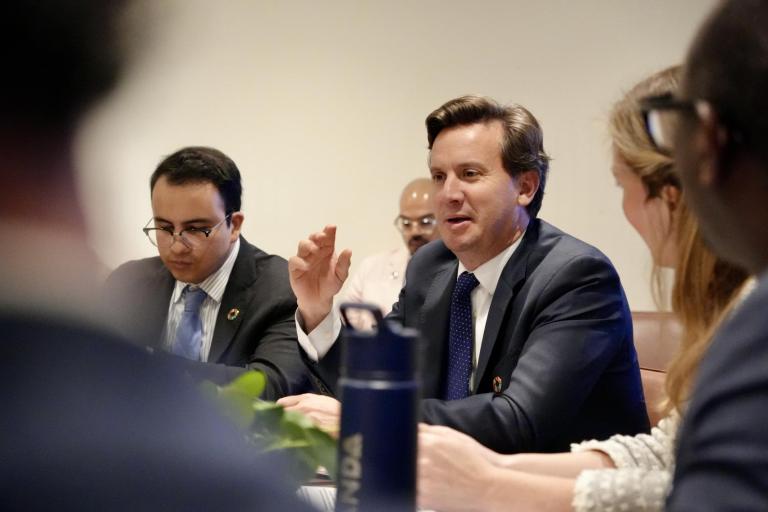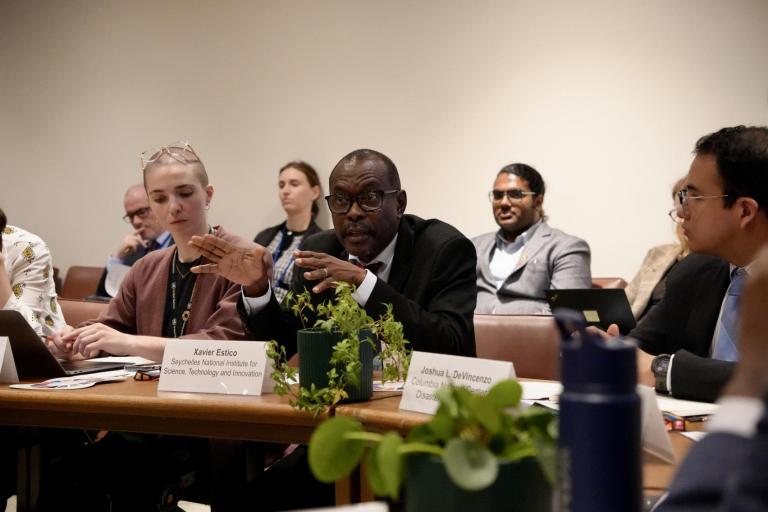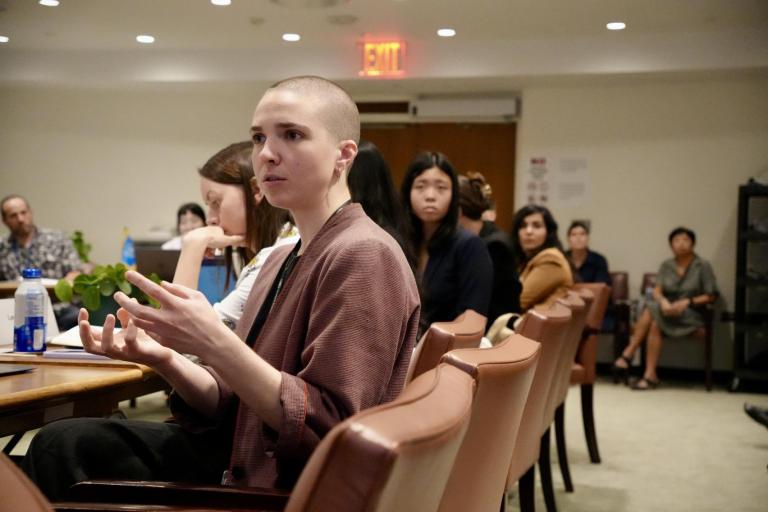AI, equity, and partnerships take center stage in the global push for early warnings for all by 2027.
New York - With just five years left to achieve the Sustainable Development Goals (SDGs), the clock is ticking for communities at risk. As climate extremes intensify and infrastructure strains, early warning systems powered by Artificial Intelligence (AI) and real-time data are becoming essential tools to save lives and protect development gains.
At the 10th Annual Multi-stakeholder Forum on Science, Technology and Innovation for the SDGs (STI Forum), WMO was one of the organizers of the side event "Early Warning for All: Harnessing AI-Powered Technologies to Strengthen Social Development and Sectoral Resilience" brought together a powerful coalition of voices, ranging from United Nations leaders to representatives of governments, academia, and the private sector. Their collective message was clear: early warnings must reach everyone and that they must be built on equity, trust, and partnerships.
Centering People and Partnerships in Early Warning Innovation
Opening the session, Robert Kayinamura, Rwanda's Deputy Permanent Representative to the UN, emphasized the human cost of inaction: "Disasters don't wait. In Rwanda last year, floods and landslides claimed over 130 lives and displaced more than 16,000. These are not just numbers - they are families, they are futures." He called for early warnings to be treated as a moral priority, highlighting Rwanda's efforts to integrate AI and satellite data into forecasting, strengthen local systems, and invest in people-centered resilience.

John Gilroy, Chief of Service for Trust Funds and Programmes at the UN Office for Partnerships (UN Partnerships), echoed this urgency and spotlighted the role of collaboration: "Early warnings turn loss into prevention, transforming chaos into preparation, fear into action. Yet half the world still lives without them. That's not just a gap, it's a global failure we must urgently correct. But we are not doing this alone. The Early Warnings for All initiative is a living example of partnerships delivering results across UN agencies, governments, and the private sector."
Building Systems that Reach Everyone
Seizo Onoe, Director of the Telecommunication Standardization Bureau at International Telecommunication Union (ITU), echoed this message by emphasizing infrastructure: "Connectivity is not a technical afterthought. It's the lifeline. Without it, even the most advanced early warning systems are rendered useless."

Dr. Juan Lavista Ferres, Microsoft's Chief Data Scientist and Corporate Vice President, and Director of AI For Good Lab, emphasized that before AI can predict risks, it must first help us see who is being left behind: "We realized early on that the foundation for early warning systems isn't just technology. It's knowing where people live. In many places, maps are 10 to 15 years out of date, or entire communities simply aren't mapped at all. And if you're not on the map, it's hard to help you or even know you need help." Through partnerships and satellite imagery, Microsoft used AI to map every building in previously unmapped regions. "We're now combining that with data on who is not connected. Because no matter how advanced your AI model is, if people can't receive the warning, it fails. The intersection of risk and disconnection is where the most vulnerable live - and that's where we must focus."
Dr. Joshua L. DeVincenzo of Columbia University's National Center for Disaster Preparedness stressed the behavioral and institutional dimensions of trust: "We must ask: do communities trust these systems because they reflect their needs or because they have no alternative? Trust isn't built at the point of impact. It starts with design, with relevance, and with seeing yourself in the data. We have to move from data delivery to decision support."

Xavier Estico, CEO of the Seychelles National Institute for Science, Technology and Innovation, shared how the island nation is building a multi-hazard early warning system rooted in its unique risk profile, including tsunamis, algal blooms, and forest fires: "Our ambition is clear, but the challenges are real: limited funding, fragmented data, and a small population base. Still, we are moving forward, designing AI-ready systems and reviewing outdated legislation to make this vision real."
Innovation in Action

The event featured powerful demos that brought innovation to life. Talea von Lupin, from the Executive Office of the UN Secretary-General, introduced the DISHA platform, which uses AI to assess post-disaster damage via satellite imagery, enabling rapid, targeted humanitarian responses.
From the United Nations Office for Outer Space Affairs (UNOOSA), Lóránt Czárán presented high-resolution digital twins of disaster-prone regions, allowing planners to simulate flooding and sea-level rise down to the building level.
Laura Paterson of the World Meteorological Organization (WMO) and Toni-Shae Freckleton of the United Nations Office for Disaster Risk Reduction (UNDRR) closed the event with a shared call to action.
"AI has the power to make early warnings cheaper, faster, and more accessible," said Paterson, "but only if we close the data divide and build national capacity." Freckleton added: "This is about more than saving lives. It's about building long-term resilience. We must move from managing disasters to managing risk and early warnings are key to that shift."
The event was co-organized by the Permanent Mission of Rwanda to the United Nations, WMO, UNDRR, UN Partnerships, ITU, and UNOOSA.






